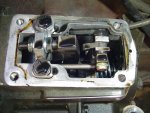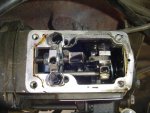SasquatchSanta
New member
- 1,177
- 18
- 0
- Location
- Northern Minnesota
Floridianson Wrote:
Yes, I still want to lower the numbers. I'm making what I feel it too much blue gray smoke. I don't know what blue/gray smoke signifies but I'm making a lot of it.
Based on the test results (someone correct me if you feel I'm wrong or have a better idea) I think I need to turn down the primary fuel adjustement another flat and then start turning down the droop screw until I can tell a difference and then check the mileage.
I'm open for input.
Yes, I did indeed have my hands full. At the low speed (1,600 RPM) tests I was laying black marks with the front tires on a couple of the tests. The front wheels were locked up and the rears were pushing thefront wheels on the pavement. I can't help but think that doing these tests is hard on the truck.Sounds like you had your hands full. You still thinking about lowering the numbers.
Yes, I still want to lower the numbers. I'm making what I feel it too much blue gray smoke. I don't know what blue/gray smoke signifies but I'm making a lot of it.
Based on the test results (someone correct me if you feel I'm wrong or have a better idea) I think I need to turn down the primary fuel adjustement another flat and then start turning down the droop screw until I can tell a difference and then check the mileage.
I'm open for input.






